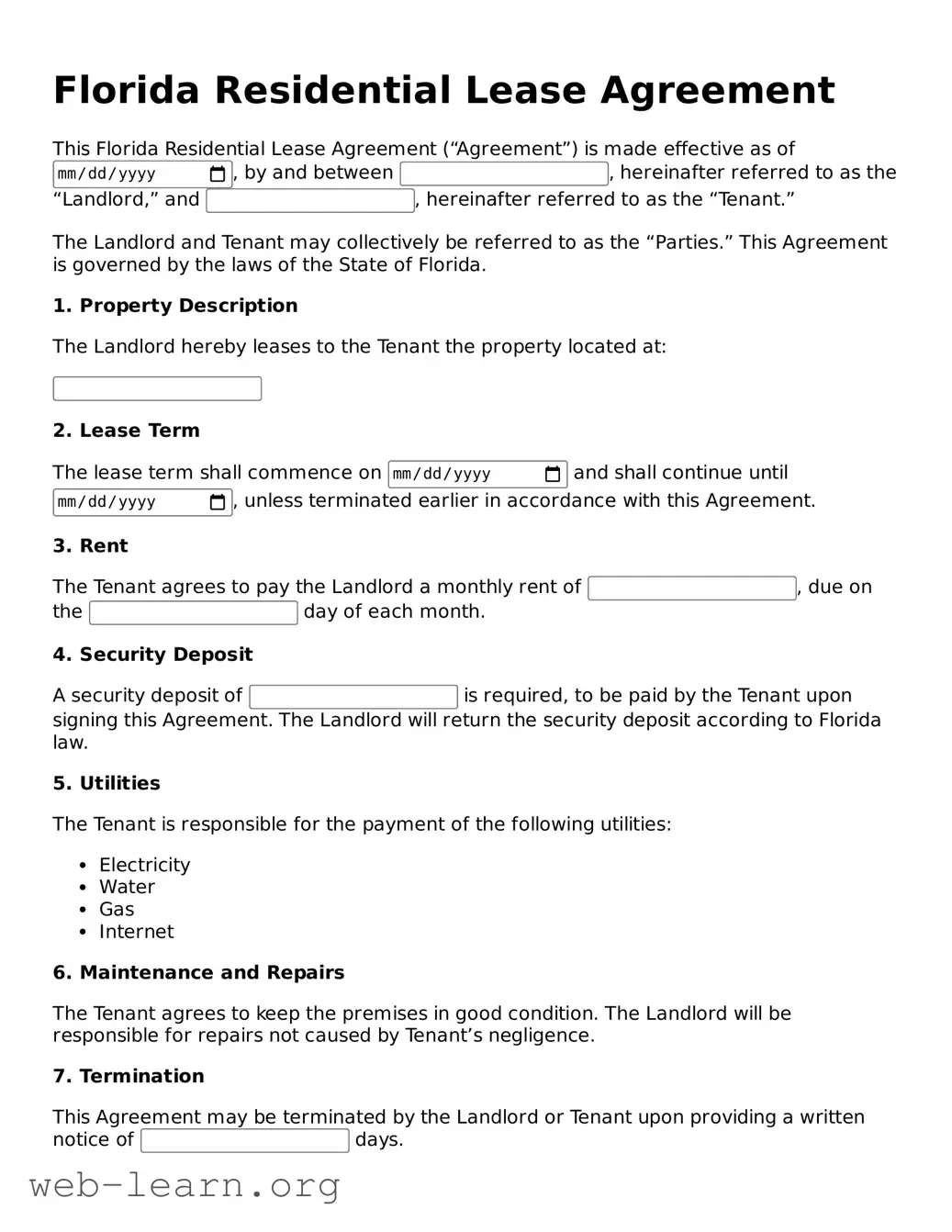Attorney-Approved Residential Lease Agreement Document for the State of Florida
The Florida Residential Lease Agreement form is a legal document that outlines the terms and conditions between a landlord and a tenant for renting a residential property. This form protects the rights of both parties by clarifying expectations, responsibilities, and legal obligations during the lease term. Understanding its importance can help ensure a smooth rental experience.
